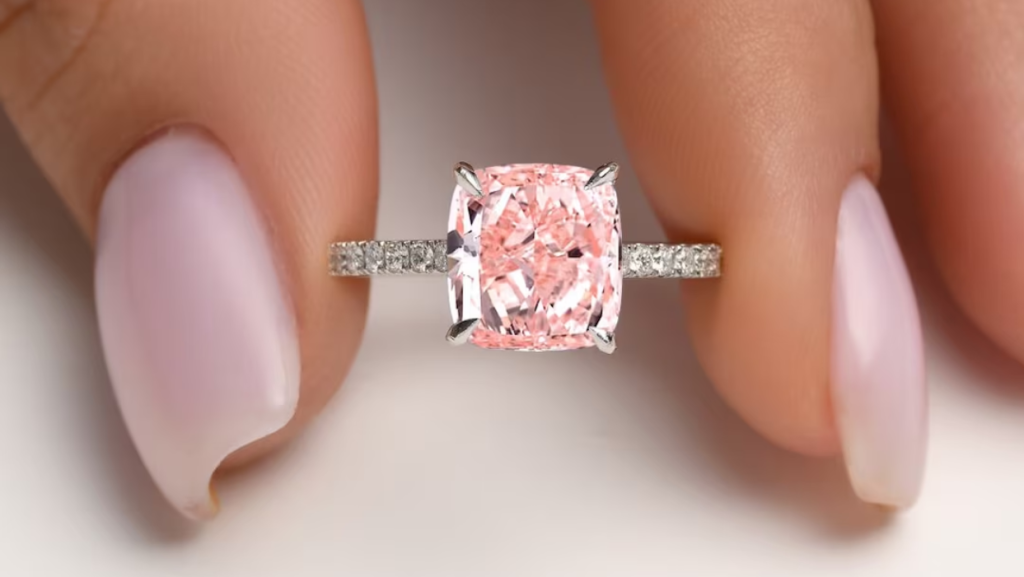Diamonds have long been synonymous with rarity, luxury, and the epitome of lasting value. For generations, the narrative surrounding diamonds has been one of scarcity — they are precious because they are hard to come by. However, this view is increasingly being challenged as we begin to understand more about the diamond industry and the natural world that produces them. Despite their high price tags and glittering allure, mined diamonds are not as rare as they are often made out to be.
The Diamond Industry’s Rarity Myth
The concept of diamond rarity is deeply entrenched in our collective consciousness, thanks in large part to the marketing efforts of companies like De Beers. In the 20th century, mined diamonds are not rare, De Beers effectively shaped the perception of diamonds as scarce, precious commodities through highly strategic advertising campaigns that emphasized their rarity and value. A key part of this myth is the idea that diamonds are formed under extreme geological conditions deep within the Earth’s mantle, and that only a limited number of them exist.
While it is true that diamonds form under extreme conditions — intense heat and pressure — this alone does not make them scarce. Geologically, diamonds are found in many parts of the Earth, from the kimberlite pipes of Africa to deposits in Canada, Russia, and even Australia. There are actually far more diamonds in the Earth than most people realize, and the apparent scarcity is largely a result of human intervention and manipulation of supply.
Diamond Supply and Demand
Diamonds are often presented as a finite resource — something that is limited in quantity and therefore valuable. However, the reality is that the supply of mined diamonds is controlled, not scarce by nature. The world’s largest diamond producers, including De Beers and other mining giants, have historically controlled the flow of diamonds to the market. By regulating how many diamonds are released and strategically hoarding larger stones, these companies can create the illusion of scarcity and drive up prices.
For example, in the mid-20th century, De Beers held a monopoly over global diamond supply. The company stockpiled diamonds to artificially limit availability and maintain high prices. Today, even though the market is more diverse, the principle remains largely the same — demand is controlled, and prices are inflated due to market manipulation rather than inherent rarity.
Mined Diamonds: A More Abundant Resource
While diamonds may be rare in the sense that they take millions of years to form, they are not necessarily rare in the context of availability. There are vast deposits of diamonds around the world, and the technology and expertise to mine them have improved significantly over time. In fact, the supply of diamonds has been increasing, not dwindling.
The global production of diamonds has also grown with the rise of smaller-scale mining operations and more advanced extraction techniques. Large-scale mines in places like Russia and Botswana produce millions of carats of diamonds each year. In fact, lab diamonds, in some regions, diamonds are even considered a byproduct of other types of mining, such as gold and other precious metals.
Additionally, diamonds can be found in a variety of sizes and qualities, with smaller stones being more common than the large, flawless gems that are typically featured in high-end jewelry. The sheer volume of diamonds extracted worldwide each year — including industrial-grade diamonds used for cutting tools and abrasives — further undermines the notion that diamonds are a rare commodity.
The Rise of Synthetic Diamonds
The increasing availability of synthetic diamonds also challenges the idea of mined diamonds as rare. Lab-grown diamonds, which are chemically identical to their mined counterparts, have been around for decades but are gaining in popularity as production methods become more advanced and cost-effective. These diamonds are not only affordable but also produced with a much lower environmental footprint than their mined counterparts.
Lab-grown diamonds are also increasingly available in a variety of qualities and sizes, making them accessible to a wider market. Unlike natural diamonds, which are limited by geological processes, lab-grown diamonds can be produced on demand, effectively making them a virtually limitless resource. As synthetic diamonds become more accepted, they challenge the very notion of rarity that has long defined the diamond industry.
Environmental and Ethical Considerations
Beyond the rarity argument, there are other compelling reasons to question the ethics of the diamond industry. The environmental impact of diamond mining is significant, with large-scale operations causing deforestation, soil degradation, and water pollution. Additionally, the history of conflict diamonds — often referred to as “blood diamonds” — has raised serious concerns about the human cost of diamond extraction, particularly in regions of Africa where diamonds have funded violent conflicts.
In contrast, lab-grown diamonds provide an alternative that is not only more environmentally friendly but also free from the ethical concerns associated with traditional diamond mining. The rise of ethical and sustainable jewelry choices, including lab-grown diamonds, has contributed to a shift in how consumers view diamonds — less as a symbol of rarity and more as a symbol of ethical choices.
Conclusion: Rarity is a Construct
The truth is that mined diamonds are not nearly as rare as the industry would have us believe. While they may take millions of years to form, there are far more diamonds in the Earth than we are led to think, and their supply is heavily controlled and manipulated by the industry. The so-called rarity of diamonds is a marketing strategy designed to elevate their perceived value and drive up prices.
As consumers become more informed about the realities of diamond supply and the environmental and ethical challenges associated with traditional diamond mining, there is growing interest in alternatives like lab-grown diamonds. These synthetic stones offer a more sustainable, ethical, and accessible option without the heavy price tag.
In the end, diamonds may shine just as brightly as ever, but the myth of their scarcity is slowly fading, replaced by a more nuanced understanding of the role they play in our world.




